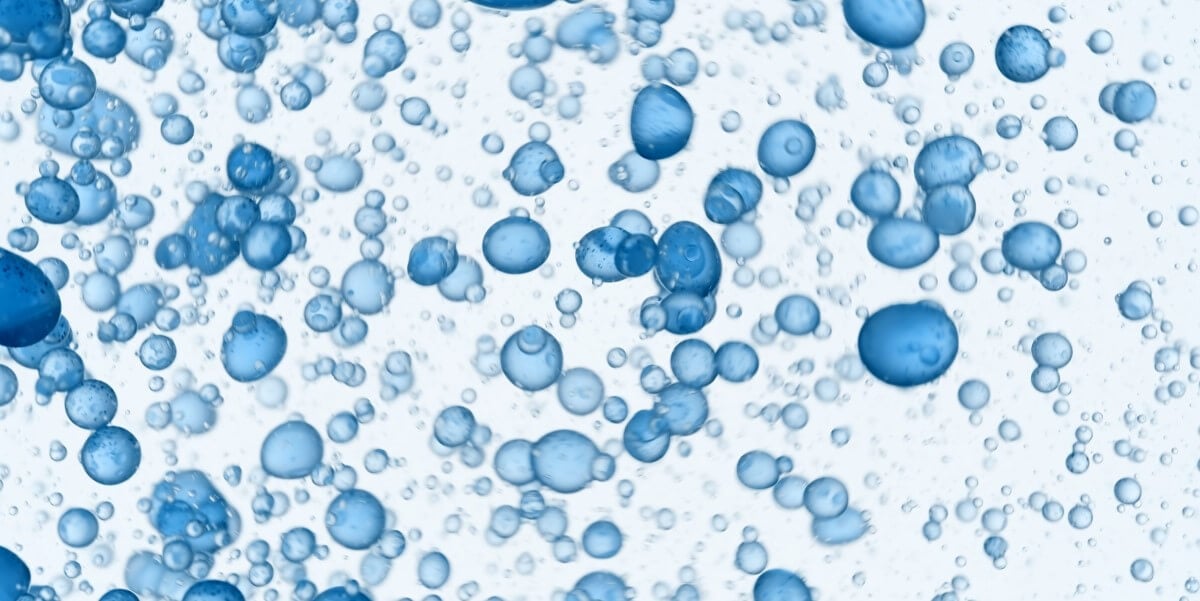Water microbiology, common contaminants and water treatment methods
Despite vast improvements in water safety, drinking water is still occasionally contaminated with pathogens and waterborne illnesses continue to occur.
What is water microbiology?
Advances in microbiology are providing new ways for us to study and understand what microbes live and thrive naturally in our water distribution systems and how we can maintain clean, safe water in buildings and especially in the last few metres – at point of delivery.
In this blog post, we explore the bacteria, viruses and common contaminants found in water and the disinfection methods used to keep them at bay.
Understanding water microbiology
Perfectly safe water contains millions of non-pathogenic microbes in every glassful — and this is just as true of bottled water as it is of tap water. The entire water distribution system (every reservoir, well, tank and pipe etc), are home to multiple species of bacteria, algae, invertebrates and viruses, most of which are completely harmless to humans. However, some are still dangerous such as E. coli, Giardia, and Cryptosporidium, which can cause gastrointestinal problems and flu-like symptoms commonly attributed to undercooked or improperly stored food.
Water companies have a duty of care to protect our water to the point of supply. However, commercial building managers are responsible for water safety and hygiene within water distribution systems and for water system disinfection from the point of source (mains-fed supply, private supply through borehole etc), to point of supply (tap, shower etc).
Microbiological and organic contaminants cannot always be detected through sight, smell or taste. Good water hygiene and water disinfection techniques, including methods of disinfection and purification of water, are essential to protect human health and guard against common bacteria, viruses and contaminants.
Bacteria in water
Single-celled organisms lacking well-defined nuclear membranes and other specialised functional cell parts, often reproduce by cell division or spores. The bacteria may be free-living organisms or parasites. Bacteria (and fungi) are decomposers that break down the wastes and bodies of dead organisms and microbes naturally found in water, making their components available for re-use. Some bacteria are helpful to humans, while others are harmful.
Virus issues in water
Parasitic infectious microbes, composed almost entirely of protein and nucleic acids, can cause disease(s) in humans. Pathogenic viruses are responsible for gastroenteritis, hepatitis and many other strains are the main targets for detection, filtration and removal via disinfection, sanitisation and purification of water.
Common contaminants in water
Other common contaminants that can be found in water include, but are not limited to:
Aluminium - Al, Al3+, Al(OH)3
- WHO Guidelines – 0.1 to 0.2 mg/L.
- Sources of contaminant – rock and soil leaching.
- Potential health effects – high risk associated with dialysis patients, may cause skin or tooth discolouration or affect the taste and colour of water.
Ammonia - NH3, NH4+
- WHO Guidelines – N/A.
- Sources of contaminant – Disinfection with chloramines, wastes, fertilisers and natural processes.
- Potential health effects – None although ammonia enhances the formation of chloramines which may create objectionable water taste and ammonia is toxic to fish.
Arsenic - As, As(III)
- WHO Guidelines – 0.010 mg/L.
- Sources of contaminant – leaching from natural deposits, wood preservatives, pesticides and industrial deposits, petroleum production, semiconductor manufacture, coal power plants
- Potential health effects – serious skin problems. Can cause cancer (skin, bladder, ling, kidney, prostrate). Also, potentially harmful to cardiovascular and nervous systems.
Barium – Ba, Ba2+
- WHO Guidelines – 0.7 mg/L.
- Sources of contaminant – Mineral deposits, disposal of drilling wastes, smelting of copper, motor vehicle parts manufacturing.
- Potential health effects – May cause difficulty breathing, increased blood pressure, changes in heart rhythm, stomach irritation, brain swelling, muscle weakness and damage to liver, kidney, heart and spleen.
Cadmium – Cd, Cd2+
- WHO Guidelines – 0.003 mg/L.
- Sources of contaminant – Corrosion of galvanised pipes, erosion of natural deposits, discharge from metal refineries, run0ff from waste batteries and paints.
- Potential health effects – may cause kidney damage.
Chloramines – NH2Cl, NHCl2, NCl3
- WHO Guidelines – N/A
- Sources of contaminant – conventional water treatment (especially chlorination because chlorine reacts with certain organic matter present in water sources to form Trihalomethanes (THMs).
- Potential health effects – can cause haemolytic anaemia when present in dialysis process water. Also linked to increased risk of cancer and infant birth delivery problems and thought to lead to heightened risk of bladder cancer.
Chromium – Cr, Cr(III), Cr+3
- WHO Guidelines – 0.05 mg/L.
- Sources of contaminant – naturally occurring and produced in certain chemical processes.
- Potential health effects – can produce nausea, gastrointestinal distress, stomach ulcers, skin ulcers, allergic reactions, kidney and liver damage, reproductive problems and lung or nasal cancer.
Copper – Cu, Cu2+
- WHO Guidelines – 2.0 mg/L
- Sources of contaminant – industrial discharge or from copper salts used for algae control in reservoirs. Also leaching and contamination from corrosion of copper piping used in plumbing.
- Potential health effects – acute copper poisoning can cause symptoms of nausea, vomiting, gastrointestinal illness, abdominal and muscle pain. Sever cases of copper poisoning have led to liver poisoning and kidney failure.
Fluoride - F
- WHO Guidelines – 1.5 mg/L
- Sources of contaminant – Municipally treated drinking water where poorly monitored or malfunctioning dosing equipment leads to over-dose.
- Potential health effects – skeletal fluorosis or serious bone disorder resembling osteoporosis. In children, mottling or discolouration of teeth or pitting of teeth (only with long-term consumption at >2mg/L).
Lead – Pb, Pb(PH)2, PbCO3, Pb2O
- WHO Guidelines – 0.01 mg/L
- Sources of contaminant – lead containing solder, brass fittings, industrial processes, mines and smelting (not a direct source in to water).
- Potential health effects – children are more at risk than adults. Reduced intelligence, impaired hearing and decreased growth in children. Damage potentially to the brain, kidneys and bone marrow. The nervous system and red blood cells can also be affected.
Nitrates and Nitrites - No3-1, No2-1
- WHO Guidelines – 11.3 mg/L (as Nitrate), 50 mg/L (as NO3-1), 1 mg/L (as Nitrite)
- Sources of contaminant – human sewage and livestock manure, fertilisers, erosion of natural deposits.
- Potential health effects – methemoglobinemia (blue baby syndrome).
Mercury – Hg, Hg2+, Hg1+
- WHO Guidelines – 0.006 mg/L
- Sources of contaminant – natural de-gassing of the earth’s crust and combustion of fossil fuels and other industrial by-products.
- Potential health effects – brain damage, kidney malfunction and developing fetus. May also create changes in vision or hearing and memory problems.
Radium – Ra, Ra2+
- WHO Guidelines – Radium 226 = 1 Bq/l, Radium 228= 0.1 Bq/l
- Sources of contaminant – radioactive decay of uranium and thorium in rocks and soil.
- Potential health effects – increased risk of cancer.
Selenium – Se, Se2-
- WHO Guidelines – 0.04 mg/L
- Sources of contaminant – natural deposits and releases from copper smelting.
- Potential health effects – hair and fingernail changes, damage to peripheral nervous system, fatigue and irritability.
Silver – Ag, AgO
- WHO Guidelines – 0.1 mg/L
- Sources of contaminant – bacteriostat in carbon containing water filters.
- Potential health effects – skin discolouration.
Uranium – U, UO2(CO3)2-2
- WHO Guidelines – 0.030 mg/L
- Sources of contaminant – naturally occurring mineral.
- Potential health effects – kidney toxicity and increased risk of cancer.
Water treatment methods
Whilst temperature control is the main form of defence against bacteria, viruses and other contaminants, it is not always sufficient in some complex water systems. The following water treatment methods can therefore be applied to ensure the water is clean and safe for use.
Chlorination
Chlorination is the process in which chlorine or a form of chlorine is added to water for disinfection and control of microbiological contaminants found in water.
Chlorination is also used in the oxidation of dissolved iron, manganese and hydrogen sulphide impurities, making water appearance clearer. Chlorine is added to water by public water companies making it safe to drink. Today, forms of chlorine, such as Ultralox40®, are widely used as methods of disinfection and secondary disinfection of water distribution systems within buildings.
Ultralox40® is a form of chlorine approved for potable water. It is ideal for use in water hygiene and pipework treatment applications, where it quickly eradicates Legionella and other microbes. It is widely used across NHS sites.
Ultraviolet Light (UV)
UV disinfection is a simple, low cost and popular method of water disinfection. UV systems expose water to light at just the right wavelength for killing microbes found naturally in water or water systems. They can be used to disinfect water in underground tanks, like those used in sports stadiums, before the water is drawn up for irrigation of playing services.
UV is an efficient way of killing bacteria, viruses, fungi, protozoans and cysts that may be present in water. However it does have its limitations as it can’t be used to remove gases, heavy metals and particulates, and bacteria can hide behind larger debris. This is why UV is often used in conjunction with other water disinfection methods.
Ozone
Ozone is produced when oxygen is exposed to high-voltage current. It can be used to destroy viruses, bacteria and microbiology, and remove iron, sulphur and manganese from the water.
Ozone is a quick disinfection method and then rapidly decomposes, cutting down on the introduction of harmful disinfection by-products and foul tastes or odours associated with some chlorination processes.
Chlorine Dioxide
Chlorine Dioxide (ClO2) production is a particularly effective microbiological control, Legionella control and primary and secondary water disinfection measure.
It requires generation (ClO2 cannot just be bought in a drum) and is suitable for biofilm eradication, membrane systems and filtration, water distribution systems, cooling towers, hospitals, hotels, horticulture, breweries, dairies and sites with hazardous chemical restrictions.
It’s sustained release effect means long-term stability in the water piping system, it has good conversion rates, and there is low risk of chemical handling. However, it is less effective in very hot water systems.
Learn more about water treatment techniques in our free ebook ‘Water safety, disinfection and secondary disinfection:
How to choose the right water treatment method for your system
Determining the best solution for you will depend on a number of criteria, including your objective, how the water is used (e.g. drinking vs industrial), and flow rates.
In all likelihood, a combination of techniques will be required for your building or water distribution system.
For more information about water chemistry, water analysis, microbiology in water or to get your water or water distribution system tested and analysed in order to choose appropriate disinfection and water management, get in touch.
Topics: Water Treatment & Hygiene

Written by Alex Winter
Alex is a Marketing Contributor and has 5+ years in water treatment and ACoP L8 compliance and works across all six linked areas of the business; Water Treatment, Waste Water, Water Hygiene, Air Hygiene, Engineering and Legionella Training.





